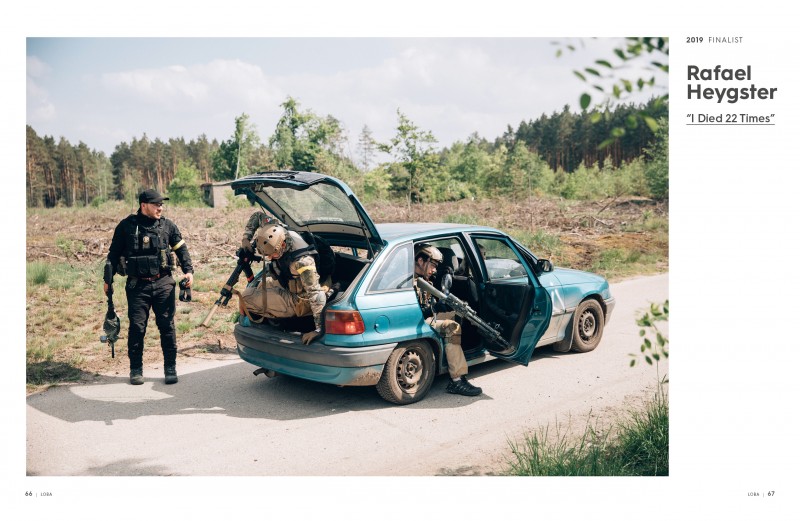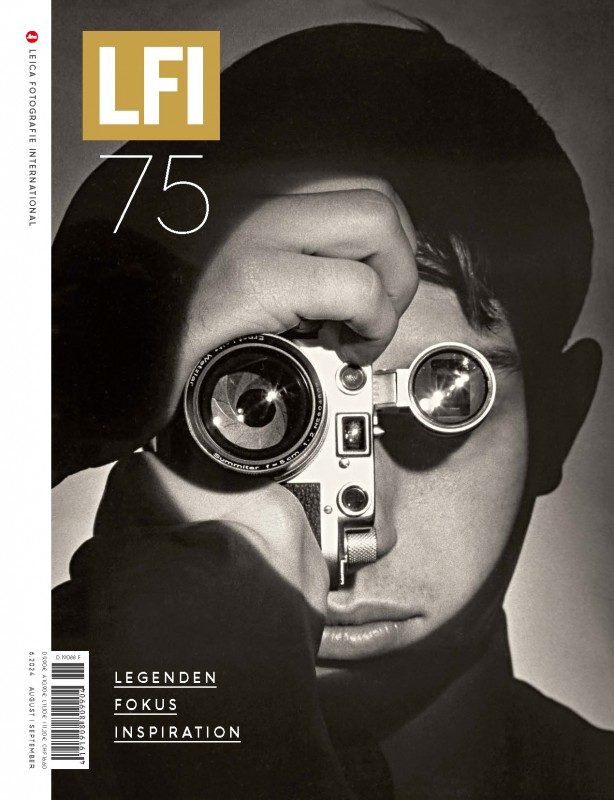LFI Sonderhefte - Leica Oskar Barnack Award 2019
In dieser Ausgabe
Mustafah Abdulaziz: With his epic long-term project, Water, Mustafah Abdulaziz is the winner of the 2019 Leica Oskar Barnack Award. Underlining his understanding of photography, he has packed this universal theme into powerful imagery, producing a visual commentary on the relationship between humanity and the environment.
Francesco Anselmi: For his Borderlands series, Francesco Anselmi travelled to the United States and its long border with Mexico, where he documented the tense situation, taking pictures that testify to fear and insecurity on both sides. The outcome – figuratively speaking – is a reportage about people on the edge.
Sebastian Wells: The term utopia is an expression which can be traced back to the ancient Greek, ou-topós, meaning ‘non-place’. This is precisely how Sebastian Wells sees refugee camps. He travelled to 24 different camps, looking for their specific characteristics, while exploring the conditions of the people living there.
Snezhana von Büdingen: Sofie is a young adult. She lives with her parents on a large farm in Saxony-Anhalt, Germany; she paints and smokes, and she has Down syndrome. The photographer von Büdingen accompanied her everyday life on the farm, living there together with the family. The visit has resulted in a touching and intimate series.
Johan Willner & Peo Olsson: Willner & Olsson open our eyes to a strikingly basic form found everywhere: the heap. As a subject, they take it very seriously, yet add a touch of humour to their work at the same time. Heaps not only vary due to the materials, condition and age, but also offer the starting point for an in-depth exploration.
Michał Solarski: A cleaner dressed in bright red in front of a turquoise background; pink, plastic flamingos on a beach of white sand; and a monkey wearing blue in an auditorium filled with yellow chairs: the world of Solarski is bizarre and colourful. This is his way of bringing memories of childhood holidays back to life.
Tadas Kazakevičius: What is left, when nobody remains? Kazakevičius’s series documents the modest way of life in the rural areas of his homeland, Lithuania. The content and format are reminiscent of documentary photography from the times of the Great Depression in the United States. Time travel into the present in Europe.
Tomas van Houtryve: This visually unusual series aims to bring to light a forgotten part of the history of the United States, to “refresh our memories and subvert damaging stereotypes”. Creating photographs reminiscent of old historic prints, photographer Tomas van Houtryve focuses upon a very touchy contemporary issue.
Rafael Heygster: “Where does war begin?” is the question Heygster asks himself. The number of conflicts being solved through war may have decreased, yet human aggression still finds bizarre outlets. Arms trade fairs and war games flourish. Is this the dark beginning of it all? The photographer explored the fascination of weaponry.
Mustafa Hassona: Do the on-going, violent tensions between the Arab and Israeli populations of Palestine represent an irresolvable conflict? Located in the land of the Bible, the modern-day conflict seems barely any less archaic than the endless skirmishes, wars and other horrors in the Bronze and Iron Ages described in the Old Testament.
Enayat Asadi: The Iranian photographer documented the war in Afghanistan. Accordingly, he also wanted to reveal the consequences of that war: spending two years in the region where Iran borders Pakistan and Afghanistan, he photographed the inhuman conditions for refugees there, as they hoped desperately for a better future in Iran.
Nanna Heitmann: A seemingly endless river, enchanted forests, and people in search of freedom: Heitmann documented life along the banks of the Yenisei River. One of the longest rivers in the world, it served as a leitmotif, guiding her through Siberia to the completion of her series depicting a journey into a kingdom of myths.
Interview with Steve McCurry
Winners & Finalists 2019
Winners 1980 – 2018
Francesco Anselmi: For his Borderlands series, Francesco Anselmi travelled to the United States and its long border with Mexico, where he documented the tense situation, taking pictures that testify to fear and insecurity on both sides. The outcome – figuratively speaking – is a reportage about people on the edge.
Sebastian Wells: The term utopia is an expression which can be traced back to the ancient Greek, ou-topós, meaning ‘non-place’. This is precisely how Sebastian Wells sees refugee camps. He travelled to 24 different camps, looking for their specific characteristics, while exploring the conditions of the people living there.
Snezhana von Büdingen: Sofie is a young adult. She lives with her parents on a large farm in Saxony-Anhalt, Germany; she paints and smokes, and she has Down syndrome. The photographer von Büdingen accompanied her everyday life on the farm, living there together with the family. The visit has resulted in a touching and intimate series.
Johan Willner & Peo Olsson: Willner & Olsson open our eyes to a strikingly basic form found everywhere: the heap. As a subject, they take it very seriously, yet add a touch of humour to their work at the same time. Heaps not only vary due to the materials, condition and age, but also offer the starting point for an in-depth exploration.
Michał Solarski: A cleaner dressed in bright red in front of a turquoise background; pink, plastic flamingos on a beach of white sand; and a monkey wearing blue in an auditorium filled with yellow chairs: the world of Solarski is bizarre and colourful. This is his way of bringing memories of childhood holidays back to life.
Tadas Kazakevičius: What is left, when nobody remains? Kazakevičius’s series documents the modest way of life in the rural areas of his homeland, Lithuania. The content and format are reminiscent of documentary photography from the times of the Great Depression in the United States. Time travel into the present in Europe.
Tomas van Houtryve: This visually unusual series aims to bring to light a forgotten part of the history of the United States, to “refresh our memories and subvert damaging stereotypes”. Creating photographs reminiscent of old historic prints, photographer Tomas van Houtryve focuses upon a very touchy contemporary issue.
Rafael Heygster: “Where does war begin?” is the question Heygster asks himself. The number of conflicts being solved through war may have decreased, yet human aggression still finds bizarre outlets. Arms trade fairs and war games flourish. Is this the dark beginning of it all? The photographer explored the fascination of weaponry.
Mustafa Hassona: Do the on-going, violent tensions between the Arab and Israeli populations of Palestine represent an irresolvable conflict? Located in the land of the Bible, the modern-day conflict seems barely any less archaic than the endless skirmishes, wars and other horrors in the Bronze and Iron Ages described in the Old Testament.
Enayat Asadi: The Iranian photographer documented the war in Afghanistan. Accordingly, he also wanted to reveal the consequences of that war: spending two years in the region where Iran borders Pakistan and Afghanistan, he photographed the inhuman conditions for refugees there, as they hoped desperately for a better future in Iran.
Nanna Heitmann: A seemingly endless river, enchanted forests, and people in search of freedom: Heitmann documented life along the banks of the Yenisei River. One of the longest rivers in the world, it served as a leitmotif, guiding her through Siberia to the completion of her series depicting a journey into a kingdom of myths.
Interview with Steve McCurry
Winners & Finalists 2019
Winners 1980 – 2018
Neueste Ausgaben
















